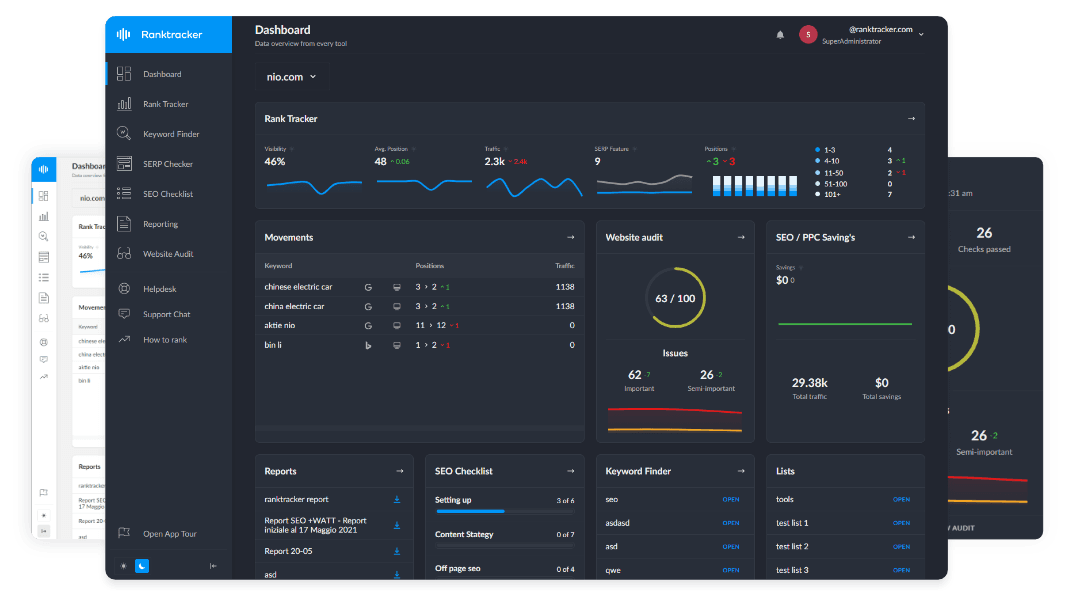Intro
One of the most perplexing challenges e-commerce site owners face is content cannibalization - particularly when it happens between overlapping product categories.
This occurs when multiple pages compete for the same keywords, confusing search engines about which page should rank, ultimately lowering visibility across your site.
Unlike common issues like customer acquisition costs or inventory management, category cannibalization emerges as your store grows - essentially punishing success. Many businesses eventually seek out an experienced ecommerce SEM SEO consultant to help untangle these complex technical issues.
The Case Study: The Home Goods Dilemma
Background
A mid-sized home goods e-commerce store was struggling with organic visibility despite quality products and good user experience. Their traffic had plateaued for six months, and new product launches weren't improving organic sessions.
After researching various ecommerce SEO packages, they realized they needed a customized approach rather than an off-the-shelf solution. The store had organized products into logical categories:
-
Kitchen Essentials
-
Bathroom Accessories
-
Home Decor
-
Storage Solutions
-
Seasonal Items
They noticed a pattern - whenever they'd optimize one category page, rankings would improve briefly, then fall, while another page would rise temporarily before also falling.
Initial Investigation
The first step was conducting a comprehensive ecommerce SEO audit to identify underlying issues. This revealed the core problem: severe keyword overlap between categories. Many products logically belonged in multiple categories:
-
Storage baskets appeared in both "Storage Solutions" and "Kitchen Essentials"
-
Decorative towels were in both "Bathroom Accessories" and "Home Decor"
-
Seasonal storage bins existed in both "Storage Solutions" and "Seasonal Items"
Each category page was competing against others for the same keywords. This made sense for users but confused search engines about which page to rank.
The Solution: Hierarchical Topic Ownership
We implemented a multi-faceted strategy:
1. Primary Category Assignment
We designated a "primary" category for every product that could appear in multiple categories. This primary category would own the core keyword rankings for that product type.
For example, all storage baskets were assigned "Storage Solutions" as their primary category, regardless of where else they appeared. The ecommerce SEO audit had identified this overlap as the most critical issue to address.
2. Differentiated Content Strategy
Rather than similar descriptions across categories, we developed unique approaches:
-
Primary Category Pages: Contained comprehensive, keyword-rich descriptions focusing on core functionality.
-
Secondary Category Pages: Featured context-specific content about how the product serves that particular category's needs.
3. Internal Linking Structure
We implemented a deliberate linking strategy:
-
Links from secondary pages included parameters indicating the source category
-
Primary category pages received more internal links from the homepage and blog
-
Clear breadcrumb navigation reinforced the primary category relationship
The ecommerce SEM SEO consultant on the project emphasized that proper internal linking was crucial for resolving cannibalization issues while preserving user experience.
4. Schema Markup Differentiation
We enhanced product schema markup to indicate primary category relationships more clearly, while maintaining user-facing categorization.
Results
Over a 90-day period, the changes produced significant improvements:
-
42% increase in organic traffic to category pages
-
28% reduction in keyword ranking fluctuations
-
15% improvement in conversion rates from organic traffic
-
67% increase in page one rankings for high-value category keywords
Most importantly, the store broke through its traffic plateau, seeing continued growth in following months. These results validated the investment in specialized ecommerce SEO packages tailored to their specific cannibalization challenges.
Pro Tips for Enhanced Results
Looking back, several approaches could have further improved outcomes:
1. Category Siloing with Content Hubs
Creating dedicated content hubs around each primary category would strengthen topical authority through:
-
Buying guides
-
Maintenance tips
-
Styling advice
-
User-generated content collections
This builds genuine authority beyond just fixing cannibalization. Most standard ecommerce SEO packages don't include this level of content strategy, but it can dramatically amplify results.
2. Semantic URL Structuring
We could have implemented more explicit URL structures:
- Primary category: `/storage-solutions/baskets/
`
- Secondary appearance: `/kitchen/storage-solutions/baskets/
`
This nested approach would clarify relationships while maintaining user navigation.
3. Predictive Cannibalization Monitoring
Rather than reacting to problems, a proactive system could:
-
Track rankings for category overlap terms
-
Analyze weekly crawls to identify emerging cannibalization
-
Predict potential conflicts before impacting rankings
An experienced ecommerce SEM SEO consultant would typically set up ongoing monitoring to prevent future cannibalization as the site grows.
4. User Behavior Signals
Leveraging user data more effectively would have revealed:
-
Which category paths led to higher conversions
-
Better primary category decisions
-
Improved internal linking based on actual user journeys
Key Takeaways
Successful e-commerce SEO requires addressing technical challenges like category cannibalization. While logical for users, allowing products to exist equally across multiple categories creates SEO confusion that limits organic visibility.
The All-in-One Platform for Effective SEO
Behind every successful business is a strong SEO campaign. But with countless optimization tools and techniques out there to choose from, it can be hard to know where to start. Well, fear no more, cause I've got just the thing to help. Presenting the Ranktracker all-in-one platform for effective SEO
We have finally opened registration to Ranktracker absolutely free!
Create a free accountOr Sign in using your credentials
By establishing clear hierarchies, differentiating content, and managing internal link equity, e-commerce stores can resolve these conflicts while maintaining usability. The result is stronger topical authority, clearer signals to search engines, and sustainable organic growth that doesn't plateau as your catalog expands.
A thorough ecommerce SEO audit followed by strategic implementation is the most effective path to resolving these complex technical challenges while ensuring user experience remains paramount.

